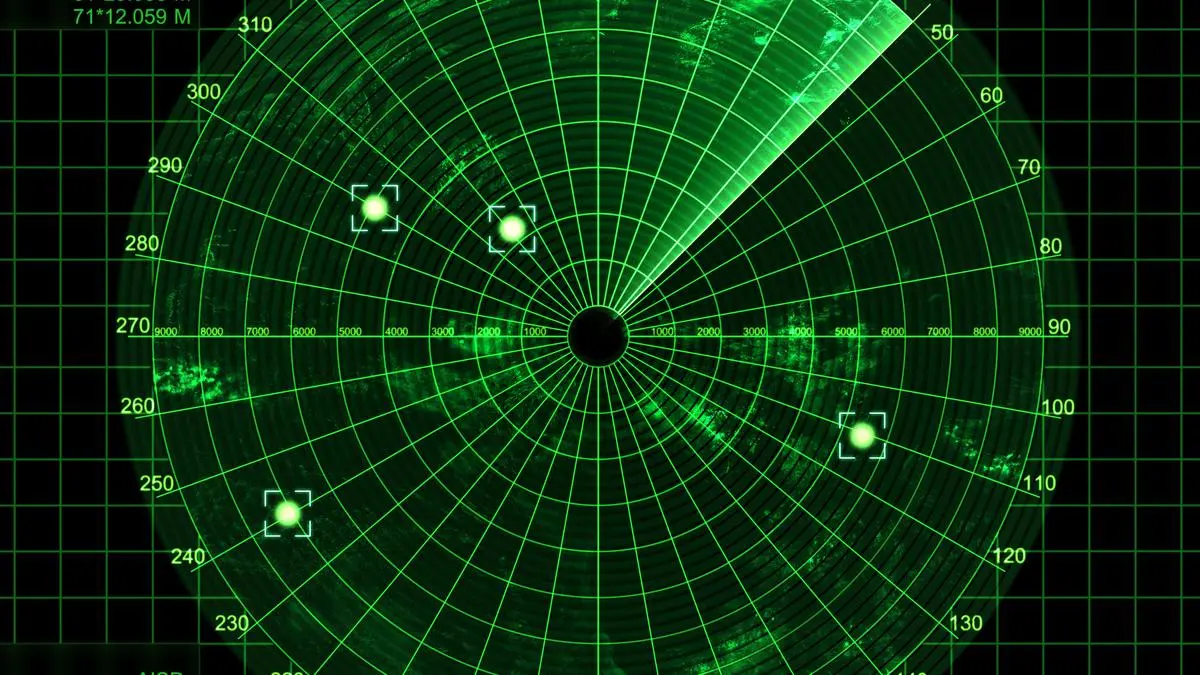Conventional radars struggle to generate high-frequency signals beyond 40 GH
| Photo Credit:
enot-poloskun
On June 29, the Defence Research and Development Organisation (DRDO) announced that it had developed a photonic radar system and was readying it for trials later this year. India will likely become the fourth country, after the US, China and Israel, to induct these radars.
While conventional radars use electronic devices (oscillators) to generate radio frequency (RF) signals, photonic radars combine two laser beams of slightly different frequencies (optical heterodyning) to generate, process, and analyse RF signals. Conventional radars find it difficult to generate high-frequency signals beyond 40 GHz. Photonic integrated circuits (PIC) can generate RF signals starting from 100 GHz and all the way to terahertz. This provides many advantages, as spelt out by DRDO.
The photonic radar’s ability to detect is significantly higher. It can, for example, call out an incoming hypersonic missile.
It generates purer signals — less of the ‘noise’ that emanates from the heat generated by electronic components — leading to sharper detection of the ‘echo’ from the target. Moreover, photonic radars can generate high bandwidth signals — the higher the bandwidth, the greater the resolution. In simple terms, you not only detect the target well, but you also ‘see’ it better.
Further, photonic radars are highly jam-resistant — photonic components are practically immune to electromagnetic jamming. Jammers send a lot of ‘noise’ or fake signals to confuse the radar, but photonic radars are not fooled. First of all, jammers typically do not send high-frequency signals. More importantly, photonic radars are capable of ‘frequency hopping’ — they keep changing their frequencies, which confuses the jammers.
Finally, photonic components do not have copper and are, hence, lighter. This is an ace up the sleeve. Imagine fitting these smaller, lighter radar systems in satellites, swarms of drones and fighter jets!
Now, if you pair photonic radars with gallium nitride (GaN) semiconductors, you will have a radar that is potent — GaN semiconductors can amplify signals efficiently, as explained in ‘Stealth technology: To see and not be seen’ (Quantum dated June 15, 2025), allowing them to travel farther and return stronger echoes.
DRDO has a working prototype, which means ‘technological readiness level’ of 6. That is heartening.
Swiping away hype
While DRDO has been measured in its announcement, social media comments show that many Indians are kvelling at the news. However, some reality checks are needed. One big challenge for India is in gaining access to PICs, since the country is not equipped to fabricate them. Moreover, ‘photonics’ call for special materials, mainly indium phosphide and silicon photonics, which are not easily available.
India will have to design the circuits and get them fabbed elsewhere — but where? The US has export restrictions. Accessing from China is, of course, out of the question. Likewise, other components like tunable lasers and modulators are tough to get. So, ‘from the working prototype to industry’ is not a short hop, but a giant leap.
Edging ahead
Photonic radars are cutting edge; other countries are honing the edge. India, with its development of photonic radars, is not leading but catching up. In these emerging technologies, no country is much ahead of the start-line. India has an opportunity to lead.
There are at least two radars on the tech treadmill that promise to be better than photonic radars.
One is the quantum radar. As the name suggests, it uses quantum technology for detection and imaging. As a 2019 article in MIT Technology Review says, the US has made some progress.
At the core of this technology is the production of a pair of entangled photons — sending one to the target and then comparing it on reflection with the second photon; the difference will tell the target’s tale: its location and how fast it is moving. This is high physics. By the looks of it, quantum radars are a long way away.
The second potential technology is the ‘terahertz radar’, which operates in the electromagnetic spectrum between microwaves and infrared light, typically 0.1-10 THz — called the ‘terahertz gap’ — where the signal oscillates a trillion times a second. The corresponding wavelength is about 0.3 mm.
Terahertz technology is not as recondite as quantum radar — quite a few countries have made some progress, though there is no record of a military deployment. The good news is that India is also in the game. The Ultrafast Terahertz Spectroscopy and Photonics Lab at the Jawaharlal Nehru Centre for Advanced Scientific Research, Bengaluru, the Terahertz Communication and Sensing Group at IIT-Roorkee, and the University of Hyderabad are keeping India in the reckoning.
More Like This
Published on July 14, 2025
